- News
- Reviews
- Bikes
- Components
- Bar tape & grips
- Bottom brackets
- Brake & gear cables
- Brake & STI levers
- Brake pads & spares
- Brakes
- Cassettes & freewheels
- Chains
- Chainsets & chainrings
- Derailleurs - front
- Derailleurs - rear
- Forks
- Gear levers & shifters
- Groupsets
- Handlebars & extensions
- Headsets
- Hubs
- Inner tubes
- Pedals
- Quick releases & skewers
- Saddles
- Seatposts
- Stems
- Wheels
- Tyres
- Tubeless valves
- Accessories
- Accessories - misc
- Computer mounts
- Bags
- Bar ends
- Bike bags & cases
- Bottle cages
- Bottles
- Cameras
- Car racks
- Child seats
- Computers
- Glasses
- GPS units
- Helmets
- Lights - front
- Lights - rear
- Lights - sets
- Locks
- Mirrors
- Mudguards
- Racks
- Pumps & CO2 inflators
- Puncture kits
- Reflectives
- Smart watches
- Stands and racks
- Trailers
- Clothing
- Health, fitness and nutrition
- Tools and workshop
- Miscellaneous
- Buyers Guides
- Features
- Forum
- Recommends
- Podcast
review
£8,879.00
VERDICT:
A beautiful looking machine backed up by top-end performance and handling
Weight:
6,530g
Contact:
At road.cc every product is thoroughly tested for as long as it takes to get a proper insight into how well it works. Our reviewers are experienced cyclists that we trust to be objective. While we strive to ensure that opinions expressed are backed up by facts, reviews are by their nature an informed opinion, not a definitive verdict. We don't intentionally try to break anything (except locks) but we do try to look for weak points in any design. The overall score is not just an average of the other scores: it reflects both a product's function and value – with value determined by how a product compares with items of similar spec, quality, and price.
What the road.cc scores meanGood scores are more common than bad, because fortunately good products are more common than bad.
- Exceptional
- Excellent
- Very Good
- Good
- Quite good
- Average
- Not so good
- Poor
- Bad
- Appalling
The SV is Italian brand Basso's super-duper, high speed version of its well respected Diamante pro-level race bike, with more focus directed towards aerodynamics. If you're after a fast, lightweight, handmade carbon race machine with a bit of exclusivity, then it needs to be on your list.
Cheaper builds are available, from £4,495 for the Shimano Ultegra-equipped model.
> Find your nearest Cycle Republic store
Ride
Like a lot of bikes of this style, the Basso needs to be ridden hard and fast, this is when it comes alive. You can cruise along on it yeah, but you won't be unleashing the magic that's stored inside that frame.
The aerodynamic tweaks to this frame aren't as extreme as those we've seen on others in the marketplace, and I doubt they make much difference in the real world compared to the standard Diamante, but that doesn't stop the SV being quick, very quick, with that thrill of travelling so fast on a bike that weighs virtually nothing gives you the feeling of floating. You can cover a lot of ground very quickly and it's a relief to get plenty of use out of that 53-tooth chainring and the smaller end of the cassette.
Even with the 20mm integrated frame spacer in place and another 15mm on top of that, the Basso is still very long and low, which gets you in the mood for concentrating on your position, keeping things tucked, whether you are on the hoods or down in the drops.
The handling is lively and quick, like you'd expect from a bike of this style, but never overly twitchy, and it's pretty easy to settle things down a bit if you do go outside of your comfort zone, as long as you aren't too heavy handed. The smoother you are, the smoother the bike will respond to your touch.
This shows up when descending, if you choose the perfect line through a twisty couple of bends, as the SV will just swoop round thanks to a very tight front end and the short wheelbase. No fuss, no bother.
If you've got to adjust things for some gravel or a pothole or something, then little tweaks, a dab of the front brake or a shift of your body weight, is all it takes; they need to be tiny changes. If you panic or tense up a bit, the Basso will take a little tussle to keep things on track. You soon learn, though, and as your confidence grows, the more and more you get back from the SV.
At 6.65kg the Diamante SV is fun when ascending too, not only because of the stiff and lightweight frameset, but because of the Microtech M138 carbon fibre tubular wheels. A claimed weight of "1,175g (+/-5%)" means they don't take much effort to get spinning, and they laugh in the face of gravity.
Braking is very good on them as well, at least in the dry, so descending isn't the white knuckle ride it often is with carbon rims.
Gear-wise our test model comes with a 53/39 chainset up front and I'm guessing an 11-29 cassette. I say guessing because it looks as though the 29-tooth sprocket has been swapped out for a non-Campag 30 tooth. It's a good spread of gears for this style of bike, where speed is the main goal.
If you're going to be spending a few hours riding the Basso you'll find that the comfort is pretty good. It's a stiff beast but that doesn't necessarily mean it's harsh. It does suffer with resonation a bit from rough road vibration, in the same way a lot of lightweight carbon fibre frames do. It's there in the background so not really a major issue when it comes to longterm comfort on a ride.
I covered a few three hour rides on the Basso and I found it a very pleasant bike to be on, and you can cover a lot of ground without really noticing it.
Frame and fork
If you're trying to get your aluminium consumption under control then you'll like the Diamante SV, as Basso describes it as 'alloy free'. It's a full-carbon fibre construction using a mixture of Torayca High Modulus in grades T1000 and T800, with no alloy reinforcing parts anywhere, dropouts or bearing seats for instance. Obviously there is a bit of metal in the mix for bottle cage bolts, plus there is a replaceable gear hanger too should you drop the bike on its rear mech.
T1000 and T800 are both Intermediate Modulus carbon fibres with the highest tensile strength (stiffness) from Toray's range. Originally designed for aerospace applications, its properties make it pretty useful for bike frames. With such high levels of tensile strength you can make a frame very stiff without using much material, so it's lighter than one that uses a lower grade of carbon fibre.
We talk about carbon fibre layup a lot here on road.cc, purely because the direction you lay the fibres as well as what grade you use pretty much dictates the ride comfort, stiffness and feedback from the frame. One thing I've never seen mentioned by a manufacturer before is the specific layup for each of the tubes on its frame, but that's what Basso has done on its website, here.
Going by the performance of the handbuilt frame and fork, the Basso builders certainly seem to know what they're doing.
The head tube is an interesting piece of design, allowing for a 20mm headset spacer to be integrated into the frame. It's not a new thing, we've seen similar on Cipollini's NK1K, but Basso's solution does look exceptionally good. If you've got the back for it you can remove the spacer and run the stem flush with the top of the head tube (like you can see here) for an extreme pro position. It's a neat solution.
As you'd expect, Basso has gone down the tapered route for the head tube/fork steerer relationship. The lower part of the headset has a 1 1/2in diameter with the upper 1 1/8in. Most manufacturers are doing this now, especially on performance bikes as it brings a bit of extra stiffness to the front end under hard braking and cornering.
The down tube is an upside down triangle where it sits behind the front wheel, with aerodynamics being the main concern here. This shape also gives a flat top section wide enough to swallow the two internal cable guides, which looks neat. The SV is designed to work with both electronic and mechanical groupsets.
As the down tube gets towards the bottom bracket area it flares out to create a large junction where the seat tube and chainstays join the mix. The Press Fit bottom bracket area is a massive 86mm wide, which allows a large cross section for bonding to the other tubes, so they can all be oversized for maximum stiffness and, therefore, power transfer.
Access to the cable or wires for the gearing is under a cover on the bottom of the bottom bracket shell, which keeps them out of the elements.
There is more aero thinking when it comes to the seat tube, with the profile mimicking that of the rear wheel, although the two would need to be much closer together for it to make a huge difference.
Basso's seatclamp solution is a nifty one though. The own brand seatpost has a U-shaped profile as it slides down into the frame and this allows the clamping system, an expanding wedge mimicking the U-shape, to be pushed against the seatpost via the rear bolts to keep things tight. It works well as there is no slippage whatsoever. The post is also surrounded by an elastomer to provide a bit of vibration damping between the frame and seatpost, though if it does it's negligible.
The fork has been designed to match the profile of the down tube to carry on the aero theme plus it also allows for a massive crown section, giving more stiffness under braking. Basso has decided to go with direct mount brakes here, as it has on the rear of the frame, where the brake callipers are screwed directly into the frame and fork, one on each side.
Being attached directly to the frame removes any movement from a more traditional bolt-through design, like most dual pivots, so in theory you should get more stiffness and better braking. The Record Skeleton callipers are excellent in a dual-pivot design so it's no surprise they work unbelievably well in this direct-mount guise, although how much better is difficult to gauge.
Finishing kit
This model is the SV in its Sunday best, so it's not surprising to see such a high price. The full (apart from the brakes) Super Record EPS is a lovely looking piece of kit and certainly suits the style of the Basso, but I wasn't overly enamoured with the feel of the shifting and would actually take the mechanical version every time, saving a good chunk of cash at the same time.
I didn't like the feel of the gear change at the lever, the way it clicked, much preferring the softer button touch of Shimano's Di2.
That aside, the shape of the Ergopower levers is spot on, and the hoods are very comfortable to use for hours on end. The speed of each gear change is very fast and precise, too, both front and rear.
There is also a Chorus version, but if you don't fancy Campagnolo you can always kit out the Basso with Shimano Dura-Ace, Ultegra Di2 or Ultegra mechanical. The latter spec comes with alloy Microtech MCT-38 wheels and a price tag of 'just' £4,495.
The M138 wheels fitted here, as I've mentioned, are very light and very stiff, and being just 38mm deep don't suffer from crosswinds at all.
The front wheel has 18 spokes, with the rear getting 24, which seems a sensible build as they feel strong in use, especially when you inevitably hit that pothole. They remained true and the hubs very smooth throughout testing.
The rims aren't massively wide, unlike a lot of newer wheels, so anything bigger than the 25mm Michelin Pro 4 tubulars fitted will be wider than the wheels themselves, which isn't ideal for aerodynamics – remembering this is supposed to be an aero bike.
The alloy stem is Basso's own and it works perfectly with the frame in terms of aesthetics. It's a sizeable unit too, which brings a lot of stiffness to the front end. Offsetting any harshness is the carbon fibre handlebar, which has just a little bit of up and down flex at its extremities. It's minimal, so you don't feel like you're bending the bar or anything, it's just enough to offset any road vibration before it gets to your wrists.
The Selle San Marco Mantra saddle took a little while to become friends, as it's a pretty rigid seat straight out of the box, but after a few rides I started to get on with it. It's got a bit of flex in both the hull and the carbon fibre rails, which all helps out.
Value
I can hear breath being sucked in through a few teeth here.
The Diamante SV is a handbuilt, Italian superbike and thanks to the levels of craftsmanship and timescale in its construction, the price is always going to be on the steep side. But when you get aboard you realise you are riding something near the pinnacle of what is achievable when creating a road bike. It's not perfect, but it ain't far off.
> road.cc Superbike of the Year 2016-17
Comparing it to the competition we've recently tested shows that it isn't actually that expensive: Bianchi's Oltre XR4 with the same groupset comes in at £9,500, and the Cipollini NK1K I mentioned earlier is £4,200 just for the frameset. When you consider that you can get the entry-level SV for just a few hundred quid more than that, it helps put things into perspective.
Verdict
A beautiful looking machine backed up by top-end performance and handling
road.cc test report
Make and model: Basso Diamante SV Team Issue
Size tested: 53cm
About the bike
State the frame and fork material and method of construction. List the components used to build up the bike.
Frame: Basso Diamante SV Carbon handmade in Italy
Fork: Basso Carbon Rahmenkit
crankset: Campagnolo Super Record Carbon compact 53-39
Headset: Microtech Quantum Carbon 1 1/5 bis 1 1/8 integriert
Handlebars: Microtech Quantum Carbon Compact
Stem: Diamante alloy
Shifters: Campagnolo Super Record EPS Carbon 11-speed Ergopower
Brakes: Campagnolo Record Direct Mount Calipers
Rear mech: Campagnolo Super Record EPS Carbon 11-speed
Front mech: Campagnolo Super Record EPS 11-speed
Chain: Campagnolo Super Record 11-speed
Wheelset: Microtech MCT 38
Cassette: Campagnolo Super Record 11-speed 11-29 (our's has a 30t added instead of the 29)
Tyres: Michelin Pro Race 4
Seatpost: Basso Carbon
Saddle: San Marco Mantra Carbon
Tell us what the bike is for, and who it's aimed at. What do the manufacturers say about it? How does that compare to your own feelings about the bike?
Basso says: "Designed for the aerodynamic position lovers. Its tube shapes are able to cut through the air like blades. The rear turbulence is almost non-existing.
What can you improve when you are already making a bike that everybody prizes for its lightness, super handling in extreme rides, fantastic downhill performance.
We have improved the air penetration by designing new tube shapes, and reactivity by making a straight blade front fork. We have also applied the new system with double pivot brake fixing. And much more.
Diamante SV introduces the '3B-BASSO' (patented) clamp system. The seat clamping is totally masked and invisible on the frame. Not only nice to look at but also technically innovative.
Getting way ahead of the usual clamp-ring/screw holding the seat post, or the extra bulking knot on the frame to house the seat screw; The 3B-BASSO (pat.) triple point fixing becomes a solid structure between seat-post and seat-tube. This system is slim, invisible and strong. In addition to all of this the extra rubber gusset in connection with the 3B-BASSO (pat.) has an anti vibration function which anyone can appreciate on rough surface roads."
The Diamante SV is a proper superbike in both performance and looks.
Frame and fork
Overall rating for frame and fork
9/10
Tell us about the build quality and finish of the frame and fork?
It is a stunning looking machine, especially for an aero bike, with the frame finish and paintjob very impressive indeed.
Tell us about the materials used in the frame and fork?
DIAMANTE SV FRAME TECHNOLOGY
100% 3K Torayca High Modulus Carbon Fiber in T1000 and T800
LAY-UP STRUCTURE:
Top Tube: 1 x 0° + 1 x 30° + 2 x 45°
Down tube: 1 x 0° + 1 x 30° + 2 x 45°
HT: 2 x 0° + 3 x 30° + 1 x 90°
ST: 1 x 0° + 1 x 30° + 1 x 45° + 1 x 90°
CS and ST: 2 x 0° + 2 x 30° + 1 x 45°
Tell us about the geometry of the frame and fork?
One of the raciest geometries we've seen, with this 53cm model having a 545mm top tube and just a 127mm head tube if you don't include that 20mm integrated spacer. Full details are here http://www.bassobikes.com/collection/diamante-sv/diamante-sv-blue-fluo-o...
How was the bike in terms of height and reach? How did it compare to other bikes of the same stated size?
This one has a stack of 530mm and reach of 393mm, giving an unbelievably low ratio of 1:35. Most other peloton-ready machines we see start at the 1:4 mark.
Riding the bike
Was the bike comfortable to ride? Tell us how you felt about the ride quality.
The ride quality was pretty good but the Diamante SV is a race machine, so it can vibrate a little bit on anything less than smooth roads.
Did the bike feel stiff in the right places? Did any part of the bike feel too stiff or too flexible?
Yes, one thing this bike does not lack is stiffness.
How did the bike transfer power? Did it feel efficient?
With a massive bottom bracket junction and large profile chainstays, the SV transfers your input into forward motion impressively.
Was there any toe-clip overlap with the front wheel? If so, was it a problem?
No.
How would you describe the steering? Was it lively, neutral or unresponsive? Lively.
Tell us some more about the handling. How did the bike feel overall? Did it do particular things well or badly?
Initially the Basso can feel twitchy, but once you're settled in you realise just how tight the handling is. It's fun and exciting, but you do need to treat it with a bit of respect as you can get out of shape quite quickly on it.
Which components had the most effect (good or bad) on the bike's comfort? would you recommend any changes?
The carbon handlebar has a bit of flex for front end comfort, although I didn't notice much benefit from the elastomer at the seat clamp.
Which components had the most effect (good or bad) on the bike's stiffness? would you recommend any changes?
The stem is a chunky unit that provides plenty of front end stiffness.
Which components had the most effect (good or bad) on the bike's efficiency? would you recommend any changes?
The Microtech wheels are very light, which really aids acceleration and climbing.
Rate the bike for efficiency of power transfer:
9/10
Rate the bike for acceleration:
9/10
Rate the bike for sprinting:
9/10
Rate the bike for high speed stability:
9/10
Rate the bike for cruising speed stability:
8/10
Rate the bike for low speed stability:
7/10
Rate the bike for flat cornering:
8/10
Rate the bike for cornering on descents:
9/10
Rate the bike for climbing:
9/10
The drivetrain
Rate the drivetrain for performance:
8/10
Rate the drivetrain for durability:
8/10
Rate the drivetrain for weight:
8/10
Rate the drivetrain for value:
6/10
Tell us some more about the drivetrain. Anything you particularly did or didn't like? Any components which didn't work well together?
Super Record EPS is Campagnolo's top flight groupset and the aesthetics certainly suit a frameset of this quality. The shifting is quick and precise, but I must say I prefer that of Super Record mechanical, which I think has a much nicer feel.
Wheels and tyres
Rate the wheels for performance:
9/10
Rate the wheels for durability:
8/10
Rate the wheels for weight:
9/10
Rate the wheels for comfort:
9/10
Tell us some more about the wheels.Did they work well in the conditions you encountered? Would you change the wheels? If so, what for?
The Microtech M138 wheels are very light at a claimed 1,175g +/-5% but don't lack stiffness either. I was also impressed with the carbon braking surface.
Rate the tyres for performance:
8/10
Rate the tyres for durability:
8/10
Rate the tyres for weight:
8/10
Rate the tyres for comfort:
8/10
Rate the tyres for value:
7/10
Tell us some more about the tyres. Did they work well in the conditions you encountered? Would you change the tyres? If so, what for?
I'm a big fan of Michelin's Pro 4s, having run them on my own bikes over the years, and this tubular version is no different. Good all-rounders that roll quickly, grip well and are resistant to punctures.
Controls
Rate the controls for performance:
8/10
Rate the controls for durability:
7/10
Rate the controls for weight:
8/10
Rate the controls for comfort:
8/10
Rate the controls for value:
7/10
Tell us some more about the controls. Any particularly good or bad components? How would the controls work for larger or smaller riders?
All of the components are Basso branded, with both the stem and seatpost bringing a new twist in terms of design. Both offer plenty of stiffness. Counteracting that at the front end is the carbon bar, which has just a small amount of flex for comfort.
Anything else you want to say about the componentry? Comment on any other components (good or bad)
The San Marco saddle is very stiff, although it did break in a touch as the miles passed.
Your summary
Did you enjoy riding the bike? Yes
Would you consider buying the bike? Not this model specifically, as I wouldn't pay the extra for the EPS.
Would you recommend the bike to a friend? Yes
Rate the bike overall for performance:
9/10
Rate the bike overall for value:
7/10
Use this box to explain your score
The Diamante SV is a beautiful bike to look at and ride, certainly giving you that 'feel good factor' when you are out for a spin in the sunny lanes. The price may seem expensive but this is the all-singing, all-dancing model, and actually compares well with the likes of other Italian superbikes we've tested. Lower specced models are better value, getting you the same frame for a lot less money, depending on what equipment you choose.
About the tester
Age: 38
I usually ride: This month's test bike My best bike is: Kinesis Aithien
I've been riding for: 10-20 years I ride: Every day I would class myself as: Expert
I regularly do the following types of riding: time trialling, commuting, club rides, sportives, fixed/singlespeed
Since writing his first bike review for road.cc back in early 2009 senior product reviewer Stu has tested more than a thousand pieces of kit, and hundreds of bikes.
With an HND in mechanical engineering and previous roles as a CNC programmer/machinist, draughtsman and development engineer (working in new product design) Stu understands what it takes to bring a product to market. A mix of that knowledge combined with his love of road and gravel cycling puts him in the ideal position to put the latest kit through its paces.
He first made the switch to road cycling in 1999, primarily for fitness, but it didn’t take long for his competitive side to take over which led to around ten years as a time triallist and some pretty decent results. These days though riding is more about escapism, keeping the weight off and just enjoying the fact that he gets to ride the latest technology as part of his day job.
Latest Comments
- David9694 7 min 37 sec ago
Southampton: Car smashes into shop on St Catherines Road...
- Mr Blackbird 11 min 14 sec ago
How about this for negative stereotyping :...
- whosatthewheel 26 min ago
Sadly same experience here with TPT local to me. It has recently been modernised (widened, with dirt replaced with asphalt) to create an off-road...
- David9694 14 min 59 sec ago
£1500? I almost feel the layer of grime lifting off this one with my Muc-off cleaner, a shine returning to the alu with Autosol and an old t-shirt:...
- wtjs 1 hour 13 min ago
Standard lawyer - derived 'remorse' along with equally routine 'offender as victim' placement. I wouldn't be impressed by this 'he's having...
- slc 2 hours 48 min ago
Madness, isn't it? ...
- Basemetal 3 hours 34 min ago
Watch out for toe overlap (front wheel clearance) with midfoot cleats,
- Safety 4 hours 47 min ago
"So now you're saying that being in that family - even by marriage - makes you more likely to commit a traffic offence?"...
- neilwheel 5 hours 43 min ago
Will those wide rim brake models fit inside a shimano 40-49mm brake caliper with 28mm max clearance??? Gonna be a squeeze...
- Simon E 5 hours 52 min ago
I'd be even more concerned about the effect it may have on whether the helmet can still do its job in the event of an impact....











































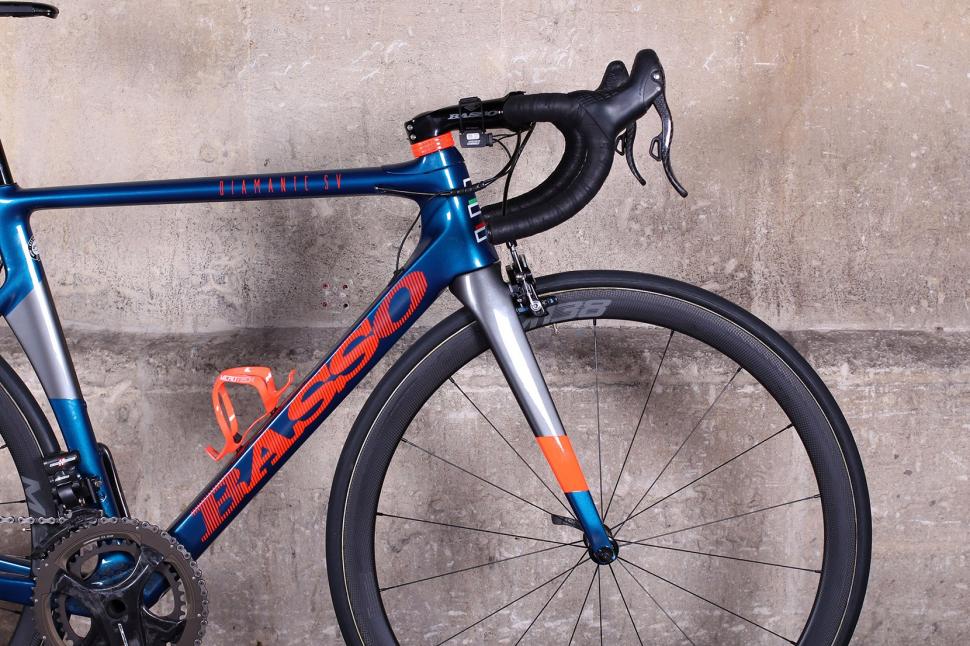
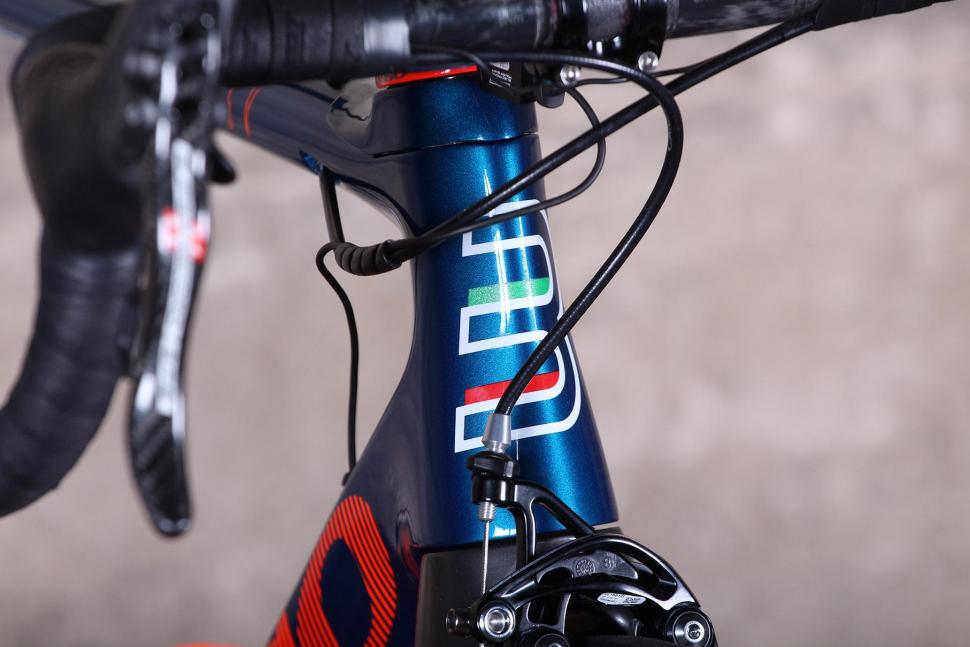
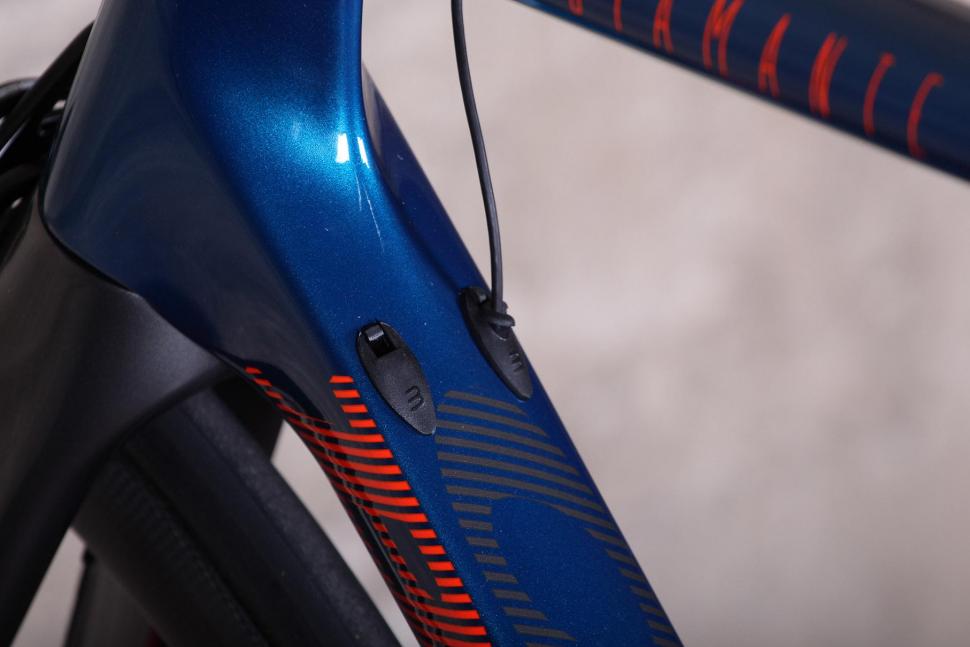
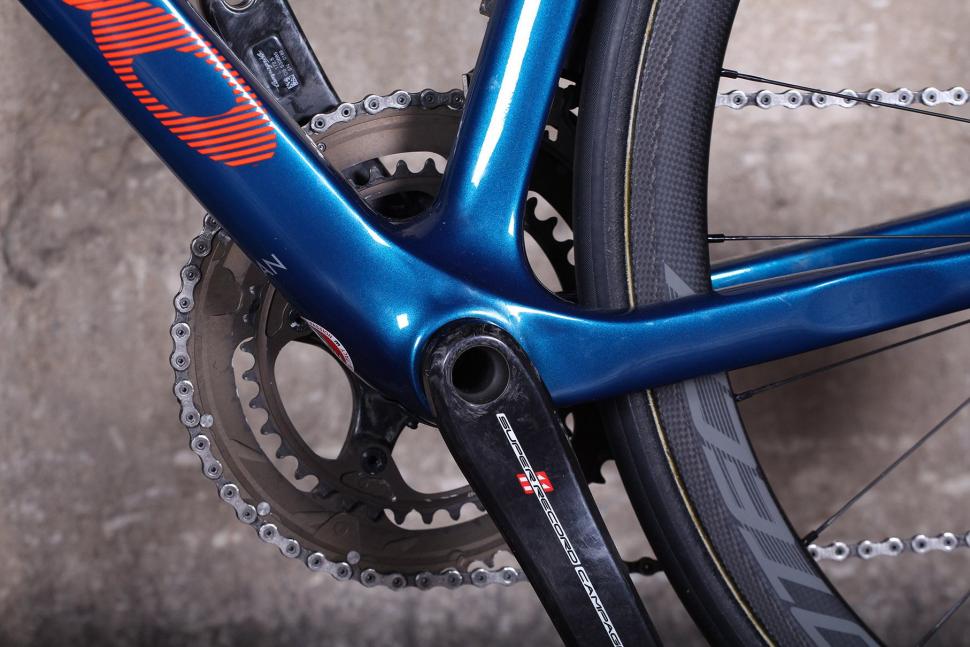
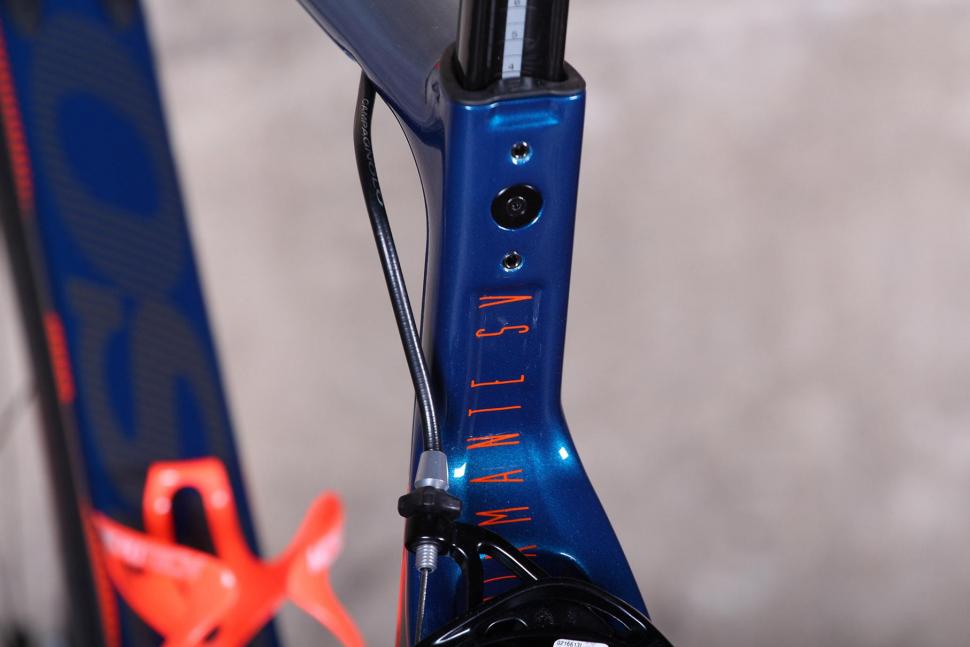



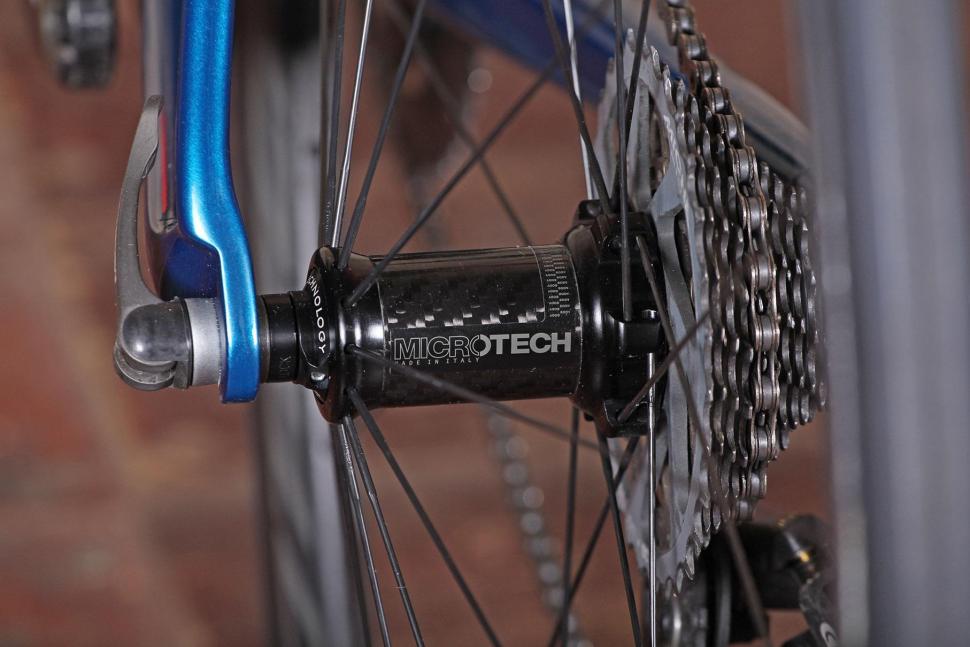
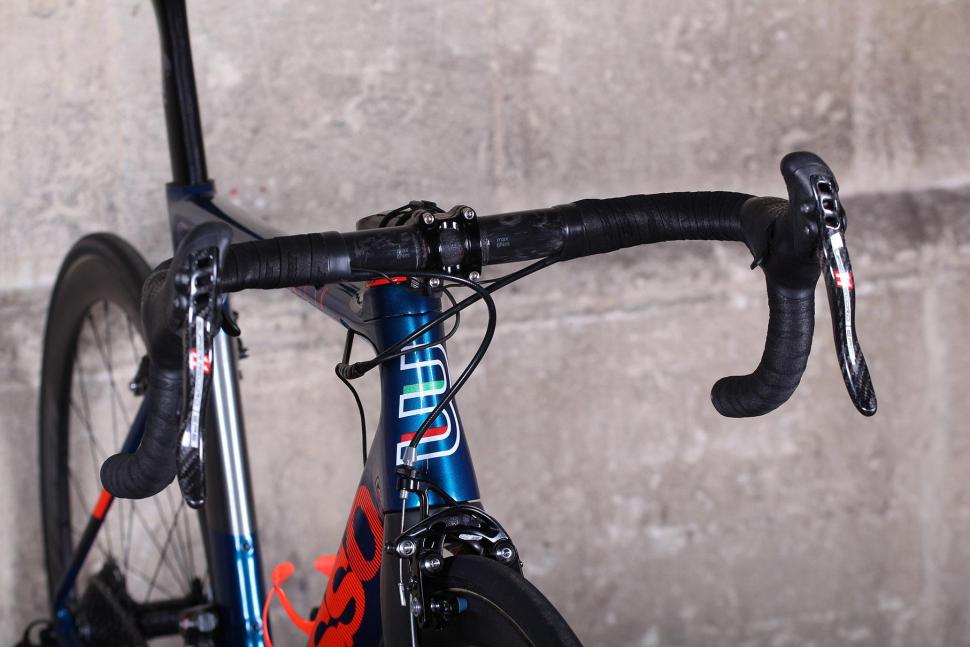
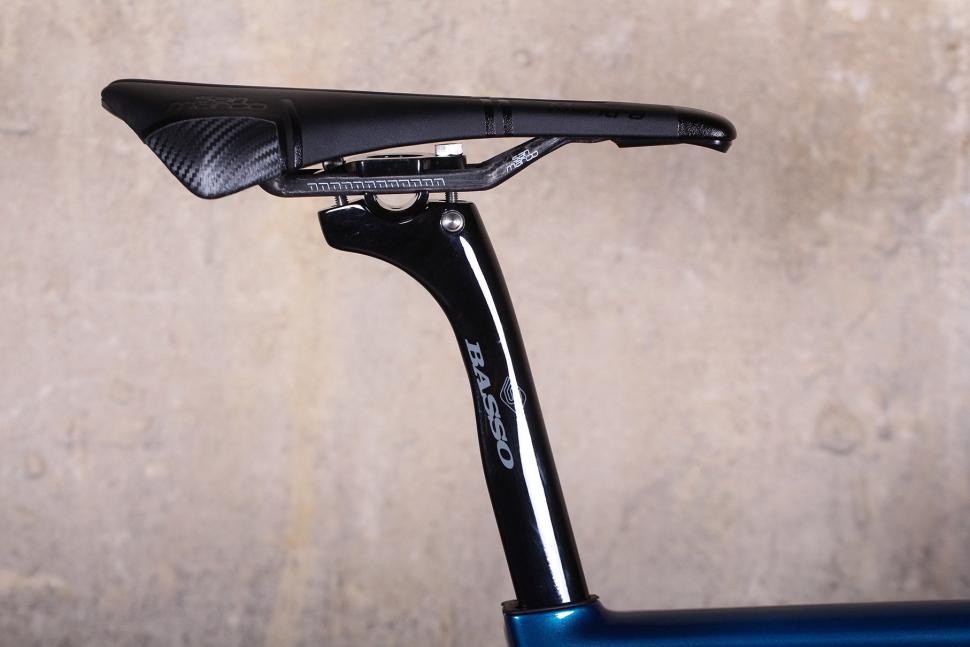
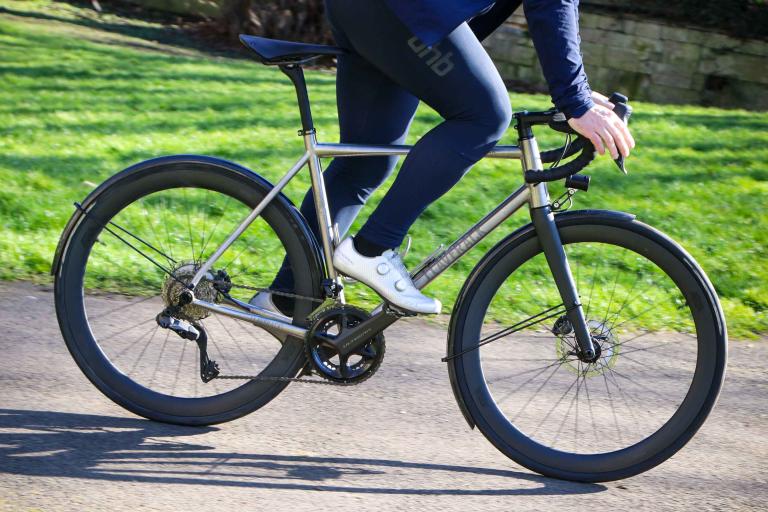


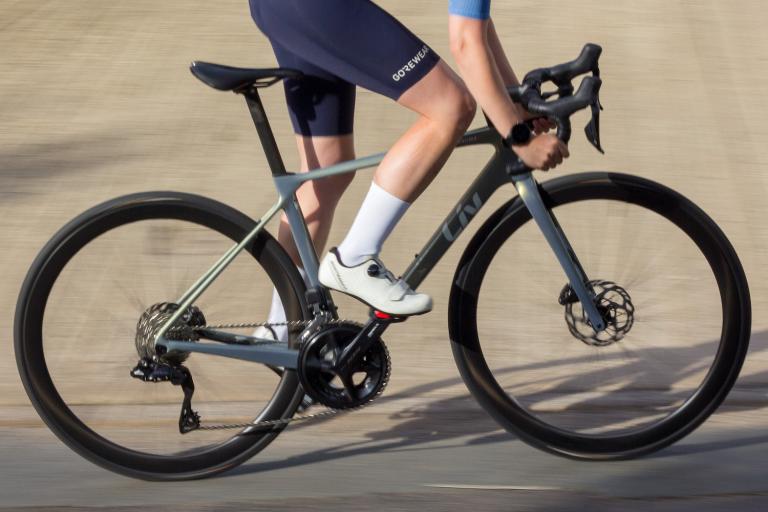
Add new comment
4 comments
Absolutely beautiful bike. Italians really know how to make things look desirable. Sigh.
Is it available as a frameset?
It is available as a frameset from so-cycle.com
We're the longest serving Basso dealers in the UK at the moment, so we know the brand inside out. If you want you can find us on facebook or email us here info [at] so-cycle.com and I can let you know the price. Cheers
That is a truly beautiful bike. I can survive with just one kidney right?
I had a look at a Boardman Team Air yesterday at £4.5g. Full areo, full carbon wheelset, Electric transmission, Lighter and 4 thousand pounds left over for a family holiday to Nice to see the tour